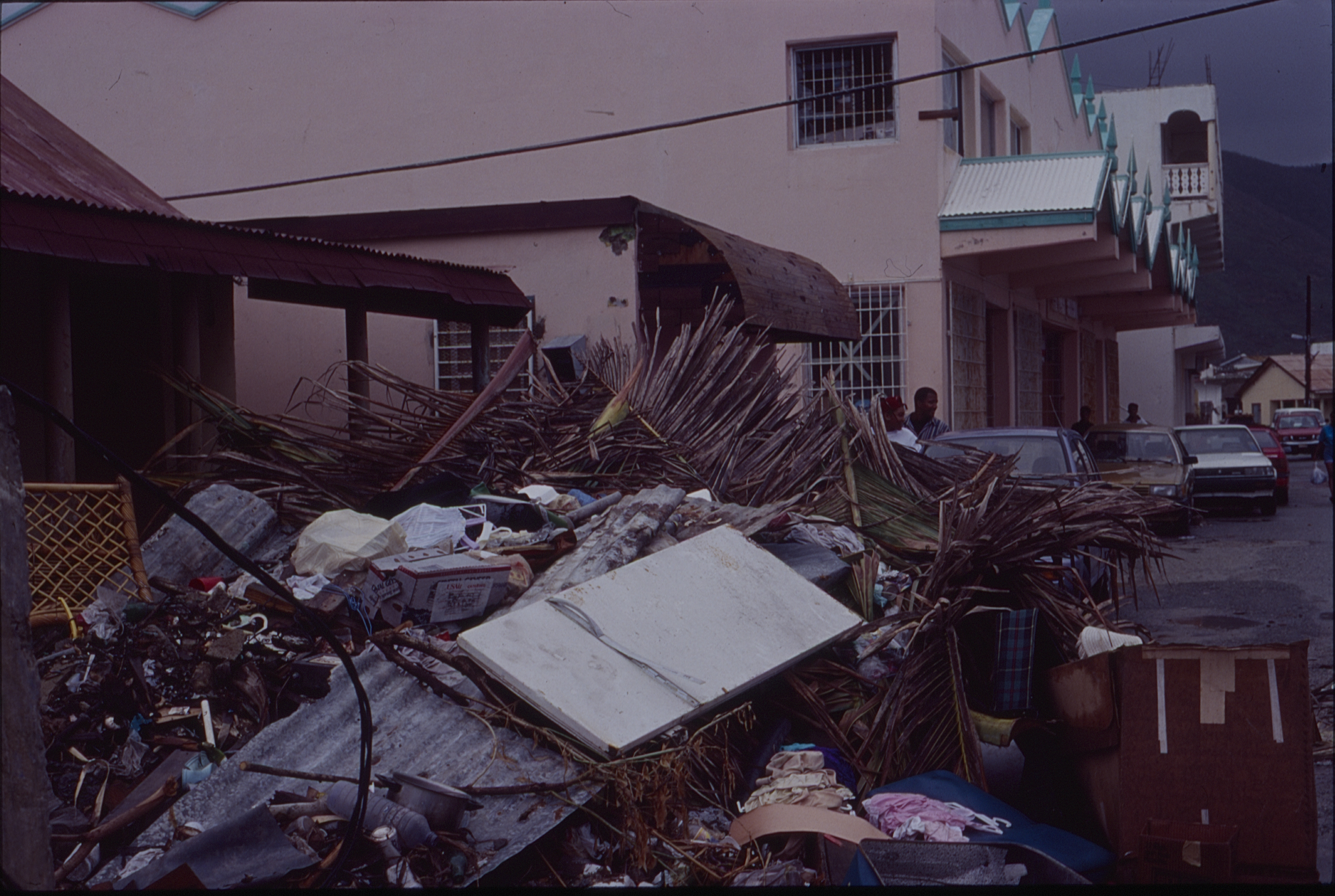Marigot and its marina lie in tranquility, shortly before being hit hard by Hurricane Luis.
Theme: Hurricanes
Aftermath of Hurricane Luis, Orient Bay
Aerial view of Orient Bay showing the intense destruction of buildings and landscapes.
Sunken boats in Simpson Bay Lagoon
Several of the 1,200 large boats damaged and sunk by Hurricane Luis in Simpson Bay lagoon, once considered the safest lagoon in the case of hurricanes in the Lesser Antilles.
Boarded stores in Marigot
In anticipation of Hurricane Luis, owners of luxury stores boarded up their windows.
Flooded street
The aftermath of Hurricane Irma on the French side.
A Shell gas station boarded up
A gas station boarded up to prevent looting and broken glass in the wake of Hurricane Luis
Drying laundry on lines after Luis
Residents on the Dutch-side of St. Martin dry their clothes on clothes lines outside of their homes following the hurricane.
Grand-Case airport after Hurricane Luis
Grand-Case airport was heavily damaged by Hurricane Luis. Relief had to be sent through the international Princess Juliana airport on the Dutch side.
A Chinese store in Philipsburg the day after Luis
Tarps were set up to cover the goods.
Hurricanes

Natural disasters in the Caribbean amplify the vulnerability of the marginalized groups and fragile ecosystems by exposing the deep-rooted neo-colonial inequalities that frame the life of the majority of the populations living in the region. Natural disasters used to be defined with a clear distinction between natural hazards and human-caused (anthropogenic) or man-made disasters. A natural hazard is caused by nature and considered an uncontrollable phenomenon, which can include hurricanes, earthquakes, landslides, floods, droughts, and volcanic eruptions.
Yet, a complete separation between natural and human-caused disasters is no longer acceptable. Humanity is influencing the natural world in such a fashion that it is impacting the climate and the strength and frequency of natural disasters. Governments increase the severity of the impact of the natural hazards when they do not provide adequate relief, or when they use these events to displace or get rid of the poorest people or foreigners who inhabit the region. This was critically apparent on the island of St. Martin after Hurricane Luis, a category 4 hurricane, struck St. Martin on September 5th and 6th, 1995 and destroyed most of the island.
A comparison between the Dutch side, Sint Maarten and the French side, Saint-Martin shows the advent, impact, and aftermath of Hurricane Luis. The Dutch side thoroughly prepared: food and drinking water was stored in large quantities at fourteen ‘stormproof’ shelters on the island, but immediately after the hurricane, individuals started looting. Dutch Marines were called in to restore order – this halted the commencement of the recovery process. On the French side, recovery began immediately with homes and roads, but the richer neighborhoods were given clear priority while the main immigrant neighborhood, Cité Popo, was razed and foreigners’ houses were burned down. Saint-Martin side was also less affected compared to Sint Marteen. On the Dutch side 80% of the buildings were destroyed, and at least 7000 individuals became homeless, including undocumented migrants, especially once neighborhoods were razed. In Simpson Bay Lagoon, a harbor with a reputation of being the safest in the Caribbean, 1,300 boats sunk.
Coming soon
Recent Comments